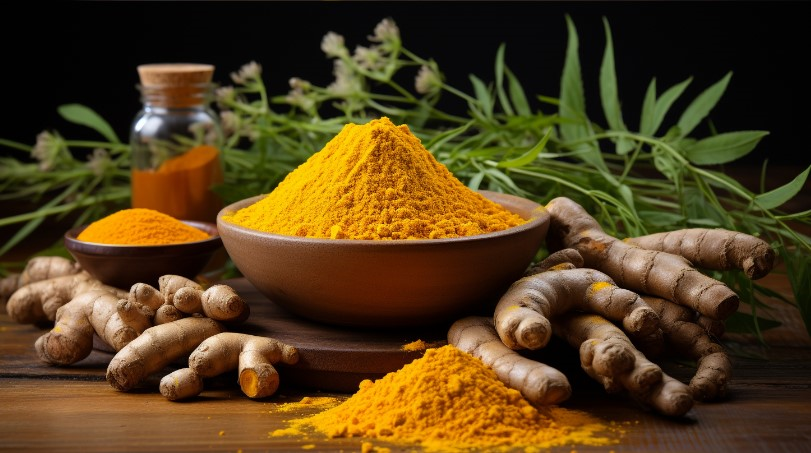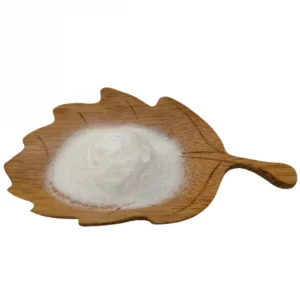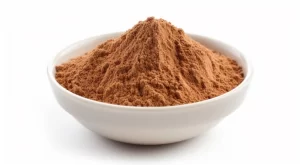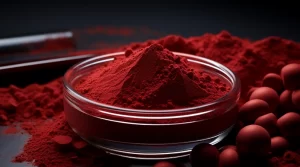Curcumin

If there’s one ingredient that’s as popular in the health supplement world as it is in the sports supplement industry, it’s curcumin! Although the curcumin ingredient is well known and it has been used in medical practice for centuries, scientific research is finally starting to catch up and dig deeper into the ultimate value of curcumin. Whether you’re a bodybuilder, weekend warrior, marathon runner or just an amateur weightlifter, it’s well known that too much inflammation can cause a lot of problems. However, it is important to note that not all inflammation is harmful, for example, resistance training causes an inflammatory response in muscles, which helps muscles repair and become stronger and larger. Another example is injury. Inflammation is a key physiological process that must occur for normal wound healing. But when your joints, tendons, or even your intestines become chronically inflamed, it’s time to take action. While there are a variety of ways to reduce inflammation, one of the most common is to take a supplement with a potent anti-inflammatory effect – curcumin.
curcumin
Curcumin is a very popular ingredient in the supplement industry. It has a wide range of benefits, but is primarily used to reduce inflammation. Curcumin is the main natural polyphenol found in turmeric, a root herb of the ginger family. [1]
Turmeric, it turns out, not only adds flavor to food, but also has many health benefits
Historically, turmeric (commonly known as turmeric) has been used to treat a variety of health conditions due to its anti-inflammatory, antioxidant, antibacterial, anti-cancer and anti-mutation properties. [1] The health benefits of turmeric are largely attributed to its curcumin content, which has been found to induce cell activity and target specific signaling molecules. [1]
Studies have shown that curcumin is beneficial for treating inflammation, metabolic syndrome, reducing pain, promoting kidney health, and helping to treat degenerative eye diseases. [1]
Studies have shown that curcumin is beneficial for treating inflammation, metabolic syndrome, reducing pain, promoting kidney health, and helping to treat degenerative eye diseases. [1]
Preliminary studies have shown that tetrahydrocurcumin is a stronger antioxidant, a more powerful blood sugar regulator, and is superior at optimizing blood lipid levels compared to its curcumin counterpart.
bioavailability
Since curcumin is rapidly metabolized in the body, [22] it makes sense that its effects could be attributed to one or more of its metabolites. However, given the exponential growth of science over the last half century or so, it’s also understandable that we’re not entirely sure what this fundamental building block is at first. Tetrahydrocurcumin was first discovered in 1978, [24] and was quickly labeled as a key bioactive metabolite of curcumin.
Studies have shown that tetrahydrocurcumin has strong biological activity compared with other metabolites of curcumin. [25] From a chemical perspective, 4-HC has also proven to be strong, and studies have found it to be more stable than curcumin in 0.1 phosphate buffers at pH 7.2 and 37 ° C.
Higher bioavailability and stronger antioxidant activity
Tetrahydrocurcumin: Better water solubility, better nitrogen, hydrogen, and LDL protection One study in this review found that because tetrahydrocurcumin is more water soluble than curcumin, it is more effective at inhibiting N2O induced H2O-induced lipid peroxidation. [26]
Tetrahydrocurcumin is colorless
Tetrahydrocurcumin is the main metabolic component of curcumin, and the compound is believed to have efficacy. From a structural point of view, tetrahydrocurcumin is very similar to curcumin, except that it has four extra hydrogen atoms. [2,3] Another major difference is color. Curcumin is known for its bright golden-orange hue, while tetrahydrocurcumin is colorless. [2, 3]
Curcumin Manufacturer /Curcumin Manufacturers/Curcumin Supplier /Curcumin Suppliers/Curcumin Factory:
Phone: +86 (029) 8187 2325
Email: [email protected]
Reference
- Prasad, Sahdeo; “Turmeric, the Golden Spice.”; Herbal Medicine: Biomolecular and Clinical Aspects. 2nd Edition; U.S. National Library of Medicine; 1 Jan. 1970;
- Kiuchi F., et al; “Nematocidal Activity of Turmeric: Synergistic Action of Curcuminoids.”; Chemical & Pharmaceutical Bulletin; U.S. National Library of Medicine; September 1993;
- Changtam C., et al; “Curcuminoid Analogs With Potent Activity Against Trypanosoma and Leishmania Species.”; European Journal of Medicinal Chemistry; U.S. National Library of Medicine; 2010;
- Bierhaus, A et al; “The dietary pigment curcumin reduces endothelial tissue factor gene expression by inhibiting binding of AP-1 to the DNA and activation of NF-kappa B.”; Thrombosis and haemostasis; vol. 77,4; 1997; 772-82;
- Dickinson, Dale A et al; “Curcumin alters EpRE and AP-1 binding complexes and elevates glutamate-cysteine ligase gene expression.”; FASEB journal : official publication of the Federation of American Societies for Experimental Biology vol. 17,3; 2003; 473-5;
- Beevers, Christopher S et al; “Curcumin disrupts the Mammalian target of rapamycin-raptor complex.”; Cancer research; vol. 69,3; 2009; 1000-8;
- Leu, Tzeng-Horng et al; “Direct inhibitory effect of curcumin on Src and focal adhesion kinase activity.”; Biochemical pharmacology; vol. 66,12; 2003; 2323-31;
- Lieu, Christopher, and Scott Kopetz; “The SRC family of protein tyrosine kinases: a new and promising target for colorectal cancer therapy.”; Clinical colorectal cancer; vol. 9,2; 2010; 89-94;
- Noorafshan A, Ashkani-Esfahani S; “A review of therapeutic effects of curcumin”; Curr Pharm Des; 19(11):2032-2046; 2013;
- Lawrence, Toby; “The nuclear factor NF-kappaB pathway in inflammation.”; Cold Spring Harbor perspectives in biology; vol. 1,6; 2009; a001651;
- Zhou, Hongyu et al; “The targets of curcumin.”; Current drug targets; vol. 12,3; 2011; 332-47; Jurenka, Julie S; “Anti-inflammatory properties of curcumin, a major constituent of Curcuma longa: a review of preclinical and clinical research.”; Alternative medicine review : a journal of clinical therapeutic; vol. 14,2; 2009; 141-53;
- Esmaily, Habibollah et al; “An investigation of the effects of curcumin on anxiety and depression in obese individuals: A randomized controlled trial.”; Chinese journal of integrative medicine; vol. 21,5; 2015; 332-8;
- DiSilvestro, Robert A et al; “Diverse effects of a low dose supplement of lipidated curcumin in healthy middle aged people.” Nutrition journal; vol. 11; 79; 26 Sep. 2012;
- Aggarwal, Bharat B; “Targeting inflammation-induced obesity and metabolic diseases by curcumin and other nutraceuticals.”; Annual review of nutrition; vol. 30; 2010; 173-99;
- Anand, Preetha et al; “Bioavailability of curcumin: problems and promises.” Molecular pharmaceutics vol. 4,6; 2007; 807-18;
- Jӓger, Ralf et al. “Comparative Absorption of Curcumin Formulations.”; Nutrition Journal; BioMed Central; 2014;
- Shoba, G et al; “Influence of piperine on the pharmacokinetics of curcumin in animals and human volunteers.”; Planta medica; vol. 64,4; 1998; 353-6;
- Sandur, Santosh K et al; “Curcumin, demethoxycurcumin, bisdemethoxycurcumin, tetrahydrocurcumin and turmerones differentially regulate anti-inflammatory and anti-proliferative responses through a ROS-independent mechanism”; Carcinogenesis; vol. 28,8; 2007; 1765-73;
- Vareed, Shaiju K et al; “Pharmacokinetics of curcumin conjugate metabolites in healthy human subjects.”; Cancer epidemiology, biomarkers & prevention : a publication of the American Association for Cancer Research, cosponsored by the American Society of Preventive Oncology; vol. 17,6; 2008; 1411-7;
- Ireson, Christopher R et al; “Metabolism of the cancer chemopreventive agent curcumin in human and rat intestine.”; Cancer epidemiology, biomarkers & prevention : a publication of the American Association for Cancer Research, cosponsored by the American Society of Preventive Oncology; vol. 11,1; 2002; 105-11;
- Ireson, Christopher R et al; “Metabolism of the cancer chemopreventive agent curcumin in human and rat intestine.”; Cancer epidemiology, biomarkers & prevention : a publication of the American Association for Cancer Research, cosponsored by the American Society of Preventive Oncology; vol. 11,1; 2002; 105-11;
- Pan, M H et al; “Biotransformation of curcumin through reduction and glucuronidation in mice.”; Drug metabolism and disposition: the biological fate of chemicals; vol. 27,4; 1999; 486-94;
- Holder, G M et al; “The metabolism and excretion of curcumin (1,7-bis-(4-hydroxy-3-methoxyphenyl)-1,6-heptadiene-3,5-dione) in the rat.”; Xenobiotica: the fate of foreign compounds in biological systems; vol. 8,12; 1978; 761-8;
- Aggarwal, Bharat B et al; “Curcumin differs from tetrahydrocurcumin for molecular targets, signaling pathways and cellular responses.”; Molecules (Basel, Switzerland); vol. 20,1; 185-205; 24 Dec. 2014;
- Khopde, S M et al; “Inhibition of radiation-induced lipid peroxidation by tetrahydrocurcumin: possible mechanisms by pulse radiolysis.”; Bioscience, biotechnology, and biochemistry; vol. 64,3; 2000; 503-9;
- Naito, Michitaka et al; “The protective effects of tetrahydrocurcumin on oxidative stress in cholesterol-fed rabbits.”; Journal of atherosclerosis and thrombosis; vol. 9,5; 2002; 243-50;
- Zhang Q. et al; “Circulating Oxidized Low-Density Lipoprotein is a Strong Risk Factor for the Early Stage of Coronary Heart Disease”; IUBMB Life; 71(2):277-282; February 2019;
- Holvoet P. et al; “The relationship between oxidized LDL and other cardiovascular risk factors and subclinical CVD in different ethnic groups: the Multi-Ethnic Study of Atherosclerosis (MESA)”; Atherosclerosis; 194(1):245-52; September 2007;
- Bartlett, Jacquelaine et al; “Is Isolated Low High-Density Lipoprotein Cholesterol a Cardiovascular Disease Risk Factor? New Insights From the Framingham Offspring Study”; Circulation; Cardiovascular Quality and Outcomes; vol. 9,3: 206-212; 2016;
- Bertsch, Ruth Ann, and Maqdooda A Merchant; “Study of the Use of Lipid Panels as a Marker of Insulin Resistance to Determine Cardiovascular Risk”; The Permanente Journal; vol. 19,4: 4-10; 2015;
- Wang, et al; “Efficacy of cholesterol levels and ratios in predicting future coronary heart disease in a Chinese population”; American Journal of Cardiology; 88(7):737-43; October 2001;
- Jeppesen, Jørgen, Ole Hein, Hans, Suadicani, Poul; et al; “Low Triglycerides–High High-Density Lipoprotein Cholesterol and Risk of Ischemic Heart Disease”; Archives of Internal Medicine; 161(3):361-366; 2001;
- Somparn, Poorichaya et al; “Comparative antioxidant activities of curcumin and its demethoxy and hydrogenated derivatives.”; Biological & pharmaceutical bulletin; vol. 30,1; 2007; 74-8;
- Pari L, Murugan P; “Effect of tetrahydrocurcumin on blood glucose, plasma insulin and hepatic key enzymes in streptozotocin induced diabetic rats”; Journal of Basic and Clinical Physiology and Pharmacology; 16(4):257-74; 2005;
- Mukhopadhyay, A et al; “Anti-inflammatory and irritant activities of curcumin analogues in rats.”; Agents and actions; vol. 12,4; 1982; 508-15;
- Zingg, Jean-Marc et al; “Regulatory effects of curcumin on lipid accumulation in monocytes/macrophages”; Journal of cellular biochemistry; vol. 113,3; 2012; 833-40;
- Purves D, Augustine GJ, Fitzpatrick D, et al.; “Neuroscience;” 2nd edition. Sunderland (MA): Sinauer Associates; 2001. Acetylcholine.
- Hasselmo ME; “The role of acetylcholine in learning and memory;”Curr Opin Neurobiol. 2006;16(6):710–715;
- Jones BE; “From waking to sleeping: neuronal and chemical substrates”. Trends Pharmacol. Sci.; 2005; 26 (11): 578–86;
- Nakmareong S, et al; “Antioxidant and vascular protective effects of curcumin and tetrahydrocurcumin in rats with L-NAME-induced hypertension”; Naunyn Schmiedebergs Arch Pharmacol; 383(5):519-29; May 2011; doi: 10.1007/s00210-011-0624-z;
- Zhang, Zhen-Biao, et al; “Curcumin’s Metabolites, Tetrahydrocurcumin and Octahydrocurcumin, Possess Superior Anti-Inflammatory Effects in Vivo Through Suppression of TAK1-NF-ΚB Pathway”; Frontiers; Frontiers; 28 Sept. 2018;
- Lopez-Castejon, Gloria, and David Brough; “Understanding the mechanism of IL-1β secretion.”; Cytokine & growth factor reviews; vol. 22,4; 2011; 189-95;
- Tanaka, Toshio et al; “IL-6 in inflammation, immunity, and disease.”; Cold Spring Harbor perspectives in biology; vol. 6,10;4 Sep. 2014;
- Sethi, Gautam, et al; “TNF: A master switch for inflammation to cancer.”; Cytokine Research Laboratory, Department of Experimental Therapeutics, The University of Texas M.D. Anderson Cancer Center;
- Pari L, Murugan P; “Antihyperlipidemic effect of curcumin and tetrahydrocurcumin in experimental type 2 diabetic rats”; Renal Failure; 31 Dec 2006; 29(7); 881-889;
- Murugan, Pidaran, and Leelavinothan Pari; “Antioxidant effect of tetrahydrocurcumin in streptozotocin-nicotinamide induced diabetic rats.”; Life sciences; vol. 79,18; 2006; 1720-8;
- Novelli, M., et al; “Metabolic and Functional Studies on Isolated Islets in a New Rat Model of Type 2 Diabetes.”; Molecular and Cellular Endocrinology; Elsevier; 20 Apr. 2001;
- Zhang, Dong-Wei et al; “Curcumin and diabetes: a systematic review.”; Evidence-based complementary and alternative medicine : eCAM; vol. 2013; 2013; 636053;
- DiNicolantonio, James J et al; “The Evidence for Saturated Fat and for Sugar Related to Coronary Heart Disease”; Progress in cardiovascular diseases; vol. 58,5; 2016; 464-72;
- James, Philip E., et al; “Vasorelaxation by Red Blood Cells and Impairment in Diabetes.”; Circulation Research; 12 Feb. 2004;
- Tepareenan P, Suksamrarn; “Curcumin and Tetrahydrocurcumin Restore the Impairment of Endothelium-dependent Vasorelaxation Induced by Homocystein Thiolactone in Rat Aortic Rings.”; International Journal of Pharmacology; 2012; 8(2); 128-133;
- Nakmareong S, Kukongviriyapan U, Pakdeechote P, et al; “Tetrahydrocurcumin alleviates hypertension, aortic stiffening and oxidative stress in rats with nitric oxide deficiency”; Hypertension Research; 383(5); 519-529; 2011;
- Lee, Ursula E, and Scott L Friedman; “Mechanisms of hepatic fibrogenesis.”; Best practice & research. Clinical gastroenterology; vol. 25,2; 2011; 195-206;



